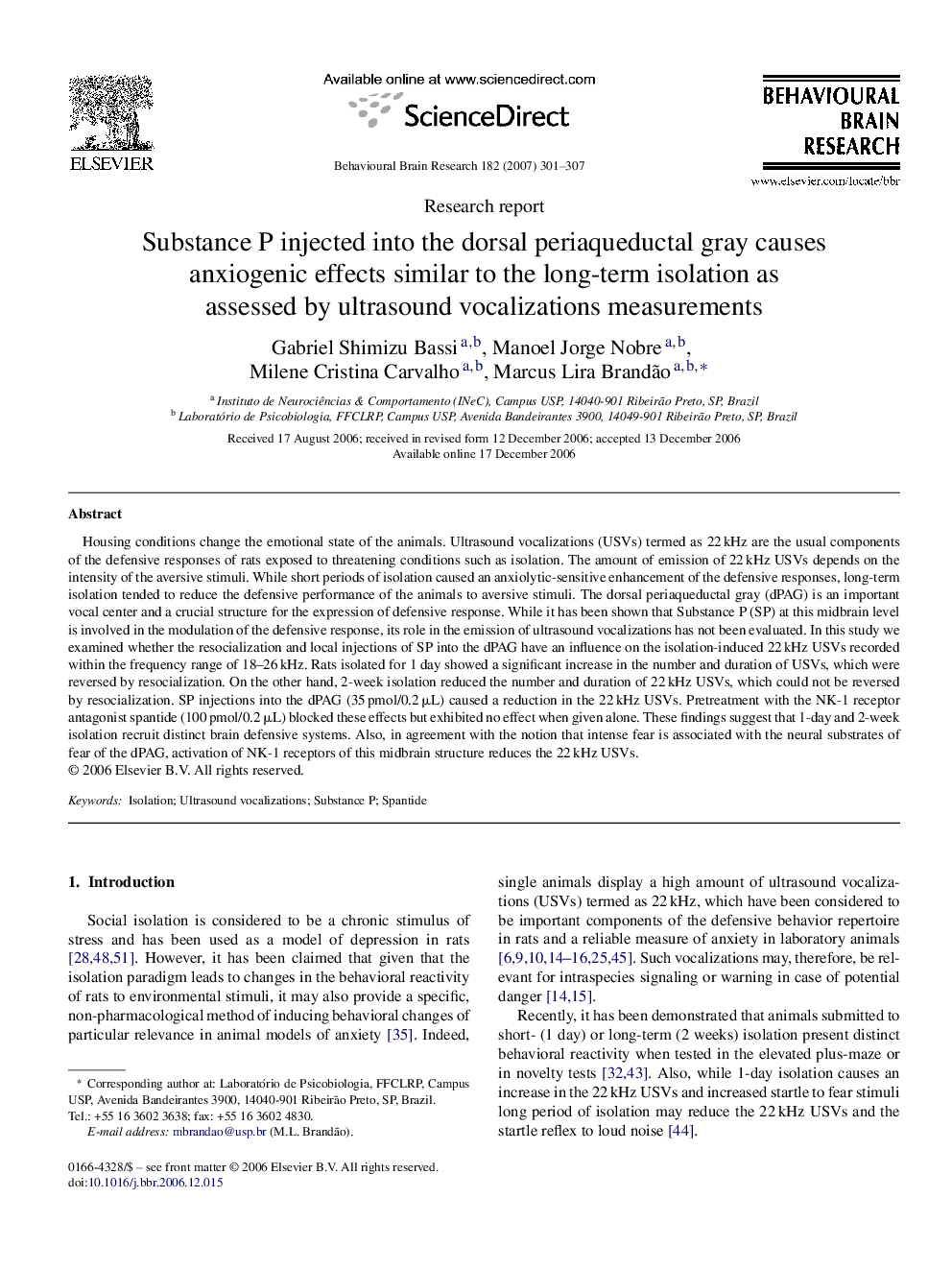| کد مقاله | کد نشریه | سال انتشار | مقاله انگلیسی | نسخه تمام متن |
|---|---|---|---|---|
| 4315504 | 1290082 | 2007 | 7 صفحه PDF | دانلود رایگان |

Housing conditions change the emotional state of the animals. Ultrasound vocalizations (USVs) termed as 22 kHz are the usual components of the defensive responses of rats exposed to threatening conditions such as isolation. The amount of emission of 22 kHz USVs depends on the intensity of the aversive stimuli. While short periods of isolation caused an anxiolytic-sensitive enhancement of the defensive responses, long-term isolation tended to reduce the defensive performance of the animals to aversive stimuli. The dorsal periaqueductal gray (dPAG) is an important vocal center and a crucial structure for the expression of defensive response. While it has been shown that Substance P (SP) at this midbrain level is involved in the modulation of the defensive response, its role in the emission of ultrasound vocalizations has not been evaluated. In this study we examined whether the resocialization and local injections of SP into the dPAG have an influence on the isolation-induced 22 kHz USVs recorded within the frequency range of 18–26 kHz. Rats isolated for 1 day showed a significant increase in the number and duration of USVs, which were reversed by resocialization. On the other hand, 2-week isolation reduced the number and duration of 22 kHz USVs, which could not be reversed by resocialization. SP injections into the dPAG (35 pmol/0.2 μL) caused a reduction in the 22 kHz USVs. Pretreatment with the NK-1 receptor antagonist spantide (100 pmol/0.2 μL) blocked these effects but exhibited no effect when given alone. These findings suggest that 1-day and 2-week isolation recruit distinct brain defensive systems. Also, in agreement with the notion that intense fear is associated with the neural substrates of fear of the dPAG, activation of NK-1 receptors of this midbrain structure reduces the 22 kHz USVs.
Journal: Behavioural Brain Research - Volume 182, Issue 2, 4 September 2007, Pages 301–307